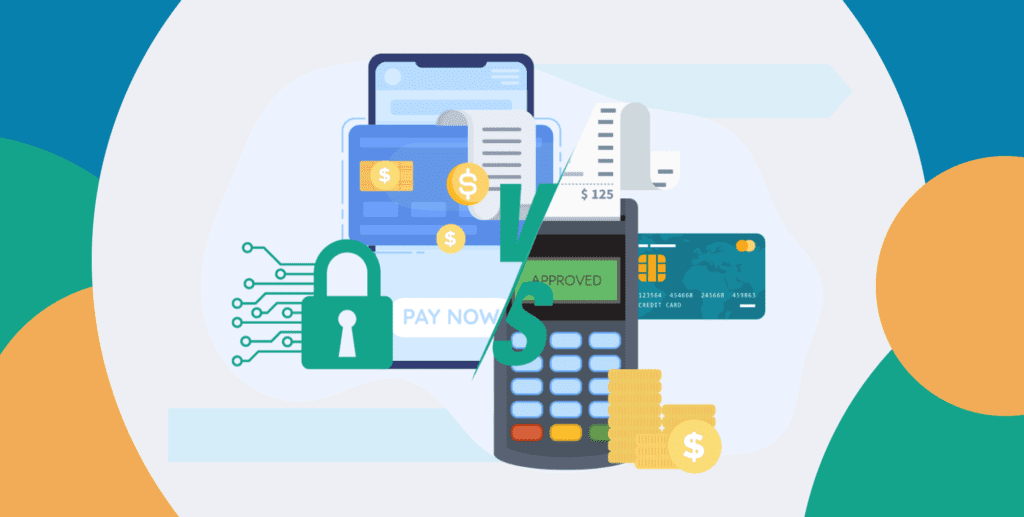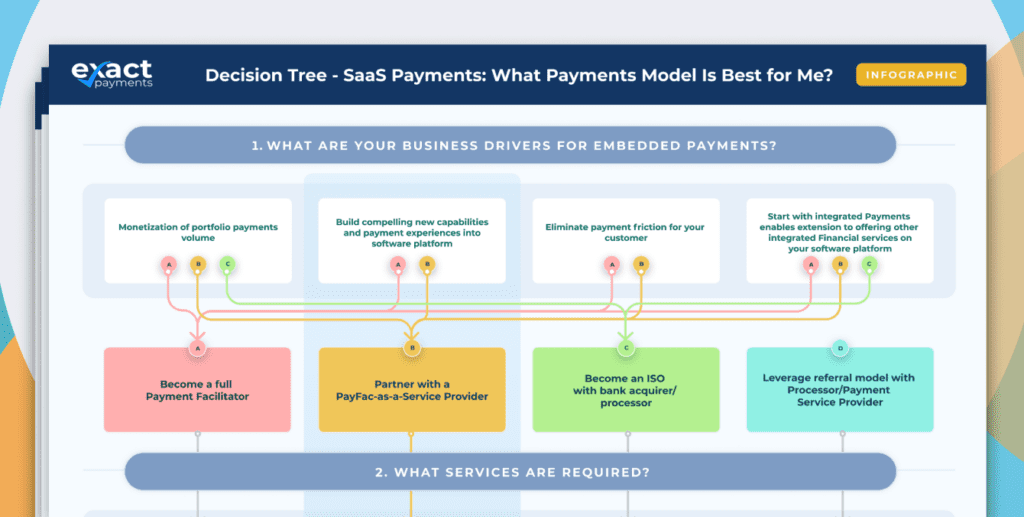Embedded Versus Integrated Payments: 4 Key Differences

Embedded versus integrated payments: what exactly is the difference? Why does it matter which model you choose? Are these two payment models actually one in the same? Keep reading as we explain the key differences of embedded versus integrated payments.
The basics of embedded versus integrated payments
Both embedded payments and integrated payments are the latest generation of payments technology for SaaS platforms. However, there are variations in each integration approach. To get started, let’s define embedded versus integrated payments.
Integrated Payments Meaning
Integrated payments stem from the first fintechs that provided APIs and allowed software platforms, SaaS businesses, and ISVs to integrate payments into their applications. The transaction and payments portion is still being directed and handled by a third party, but the data and reporting are delivered to the application, making for a more integrated and substantially improved experience. Integrated payments also mean that the payments data is transferred back to the application so that proper reconciliation and customer information is easily accessible.
With integrated payments, the connection is visible to the end user. The business integrating payments can accept payments through the system, but a payment account and support for the transaction itself are provided by a third-party provider. The result is a much better experience for the end user and for the software platform that is integrating payments.
Embedded Payments Meaning
What are embedded payments? You can think of embedded payments as version 2.0 of integrated payments. Embedded payments take the concept of putting payments within a software application even further so that the connection between the software application and payments becomes invisible to the end user. This requires a substantially larger and more powerful set of APIs, as well as more ownership of the payment process for SaaS businesses—including creating accounts, onboarding, customer service, compliance, and more. The payoff for the software provider is reliable information about transactions and customers, a greater opportunity for revenue, and a seamless client experience.
A notable difference of embedded versus integrated payments is the onboarding process. With embedded payments, onboarding new clients becomes a piece of the software itself instead of clients being referred to a third-party payments provider. When clients apply for payments in the software, embedded payments offer a seamless experience from end to end.
To help you understand this concept better, let’s take the idea of personal music consumption. In the 80s and 90s, portable music players like Walkmans and Discmans could play music, but they required tape and CDs. We would call this an integrated approach since the device and the CD work together but are separate physical items.
As technology evolved, music could be stored on the MP3 player itself. Eventually, music consumption advanced to on-demand streaming, letting people access and play any music they want seamlessly. In this embedded approach, you cannot separate the music from the device—they operate as one unit.
The Differences of Embedded Versus Integrated Payments
To dive further into embedded versus integrated payments, let’s look at the differences between them.
- Ownership of onboarding and account
The main difference of embedded versus integrated payments stems from the ownership of the account and onboarding process. While for both integrated and embedded payments, the actual flow of money and data remains very similar. However, with integrated payments, the ownership of the process is firmly in the hands of the third-party payment provider, starting with onboarding. Software clients will apply for payment acceptance with the third-party provider.
With embedded payments, ownership of the onboarding process is in the hands of the ISV or SaaS platform. The application process for payment acceptance is built into the software.
- Customer support
With integrated payments, customer support is handled by the third-party processor. For many customers, this may not be a big deal, but for ISVs and SaaS platforms, the customer experience is critical. Any friction in the payments process for the platform’s customers could result in churn. For example, if a customer waits 48 hours for a response to an urgent request, the customer may terminate the relationship with the payments provider and the software business. Likewise, if funding is not received on time, this reflects poorly on the software provider.
In contrast, embedded payments allow the SaaS platform to manage clients directly as the first tier of support. This creates a unified experience where payments are not just integrated but are embedded within the software.
- Customer experience
As mentioned, customer experience will be disjointed with an integrated approach. Along with varying levels of support quality, the payment provider will offer an entirely different experience from the software business. Multiple forms with different logos, for example, could confuse the SaaS client base.
With embedded payments, the ISV can choose to ingrain the onboarding process in the software, creating a unified experience in terms of the look and feel of the user interface. Embedded payments offer more control and the ability to deliver a better customer experience.
- Potential ROI / Revenue
Perhaps the most critical difference for those researching payment providers is potential revenue and ROI. Both integrated and embedded payment models provide a positive and worthwhile ROI if implemented correctly. However, since embedded payments transfers more control and risk to the software provider, there is also potential for more reward.
Additionally, the fact that embedded payments deliver a better customer experience can also boost ROI in the form of improved retention rates.
That sums up integrated versus embedded payments. Ready to learn more about the benefits of embedded payments? Contact us today.



